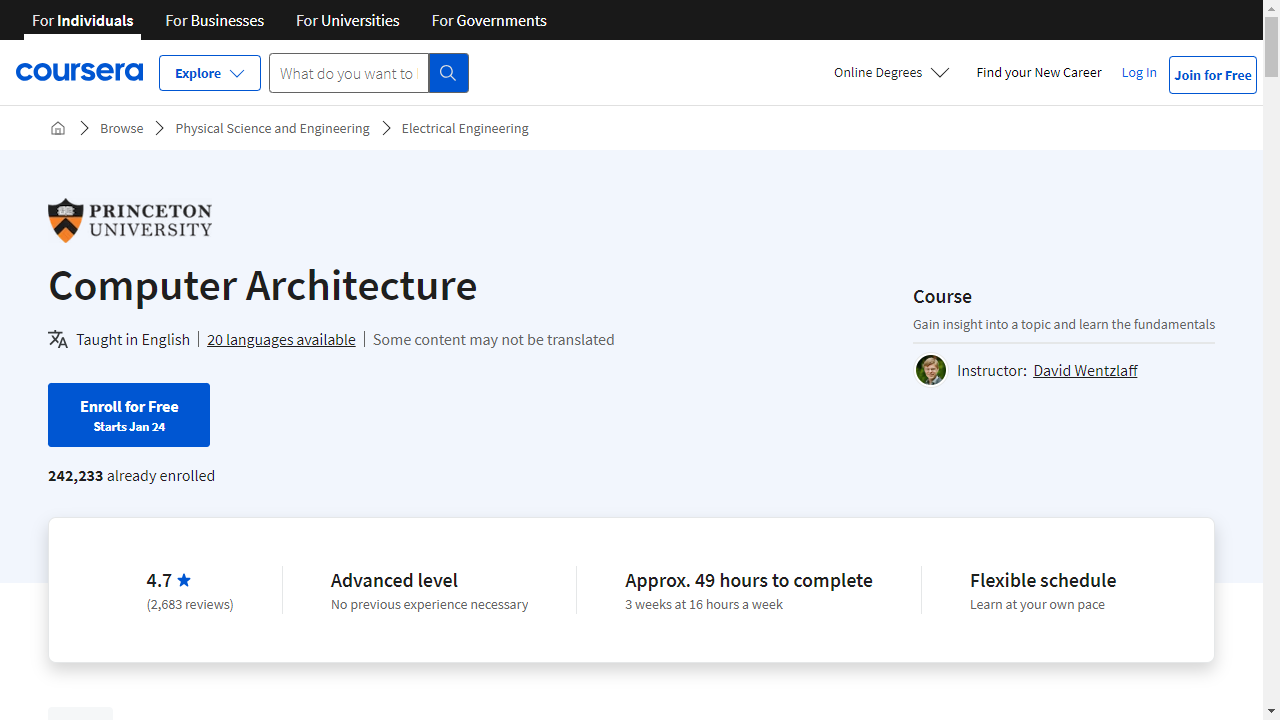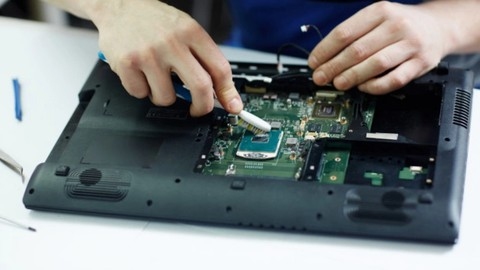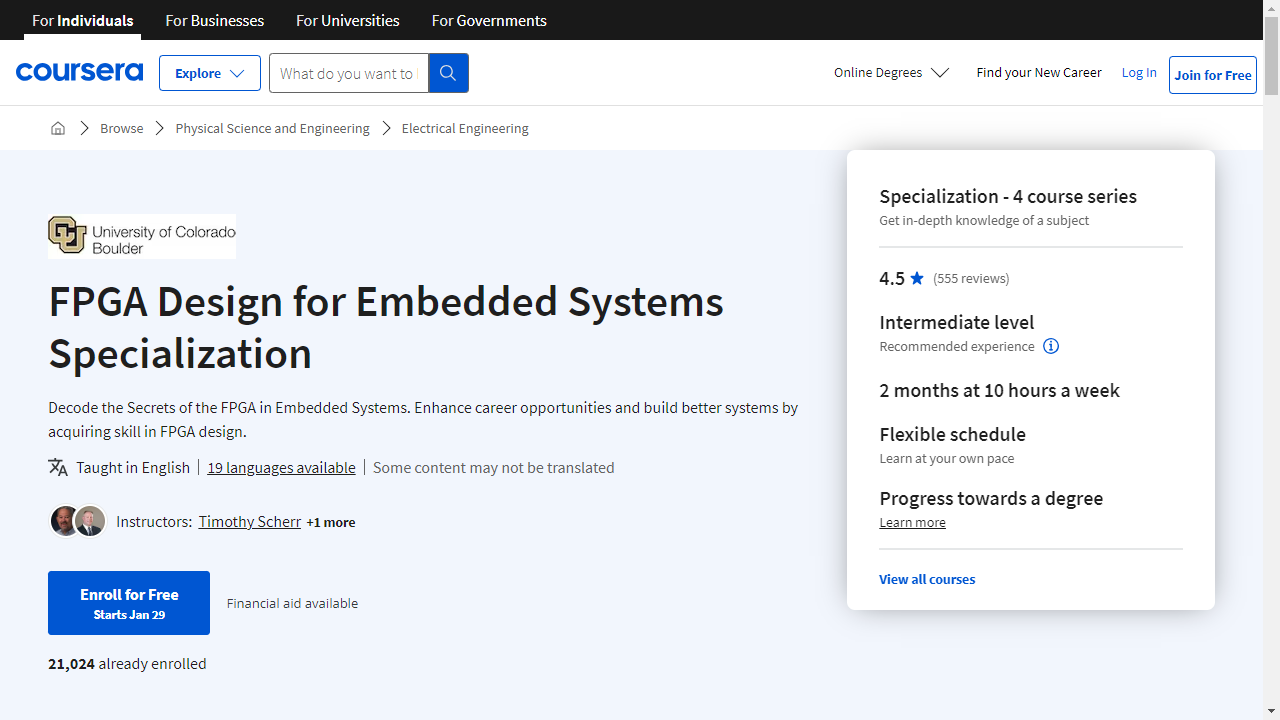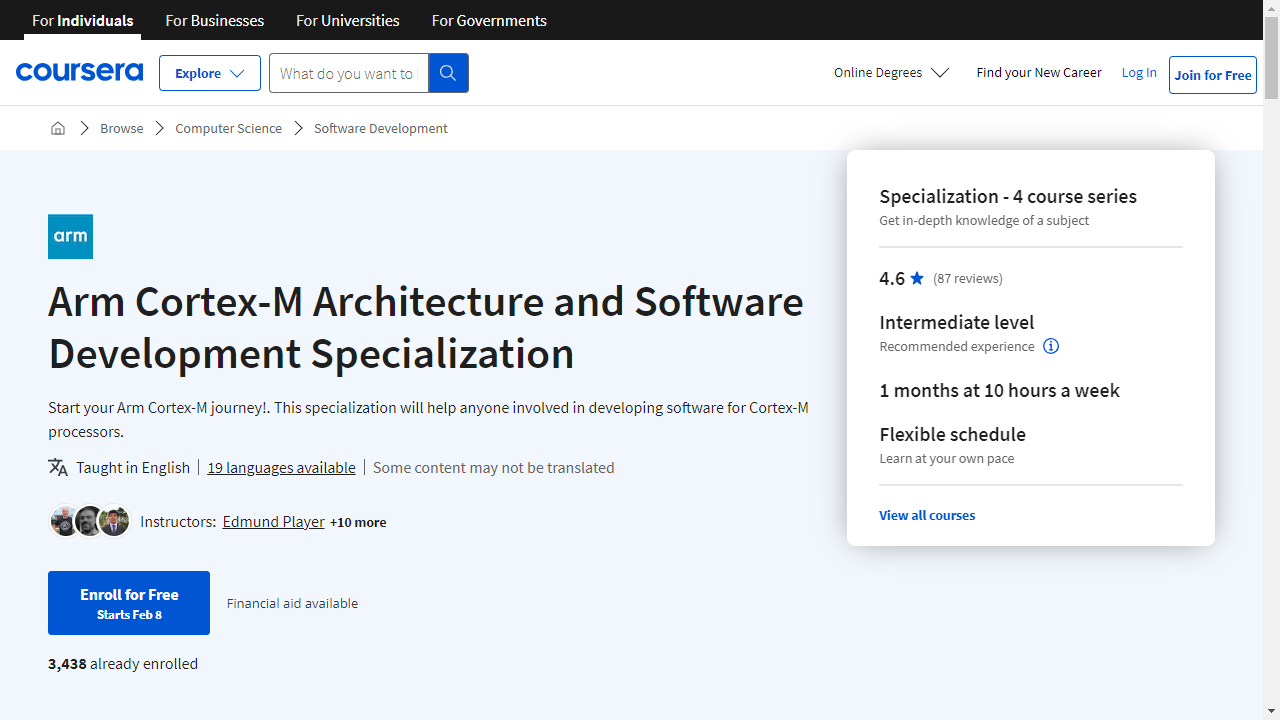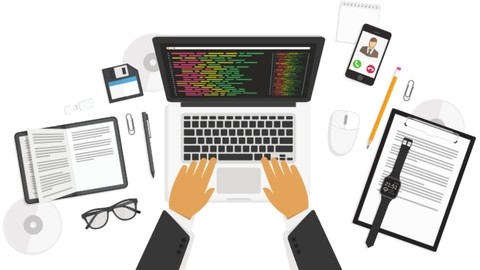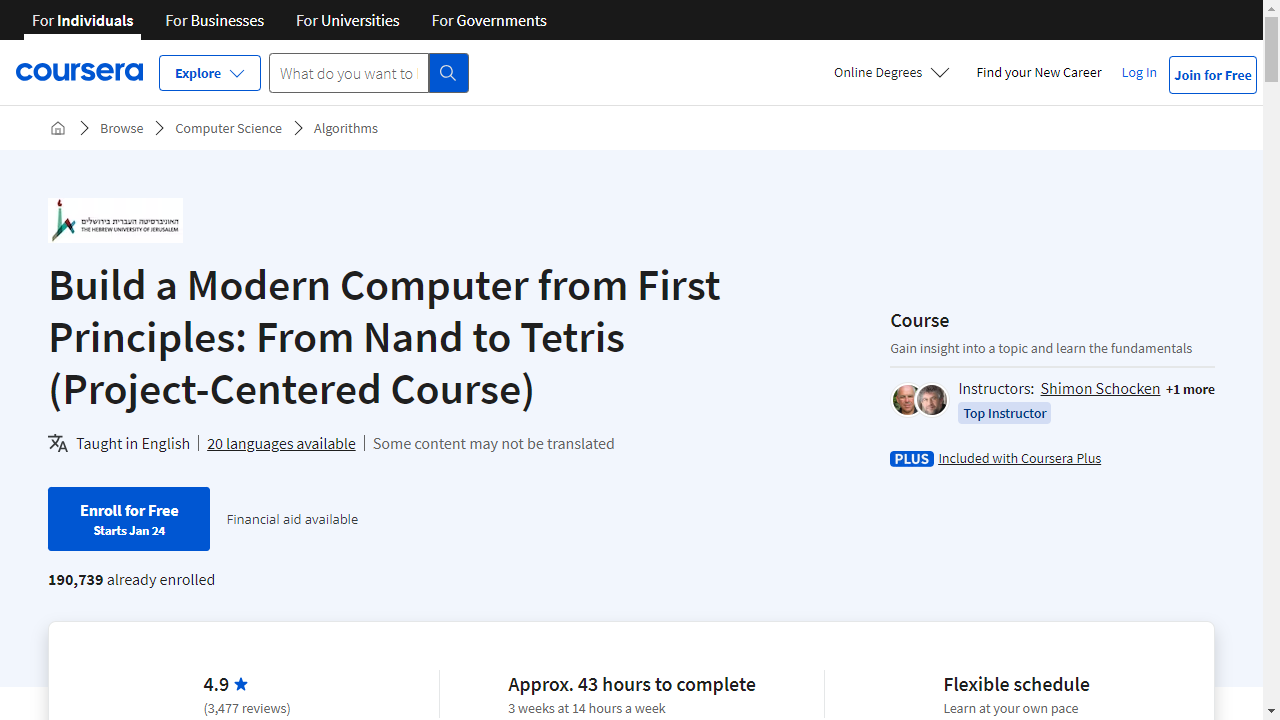Computer engineering is a dynamic field that combines the principles of electrical engineering and computer science to design and develop computer systems and their components.
From the intricate circuitry of microprocessors to the complex software that powers our devices, computer engineers play a vital role in shaping the technology that surrounds us.
By delving into this field, you can gain a deep understanding of how computers work at both the hardware and software levels, opening doors to exciting careers in areas like embedded systems, robotics, and artificial intelligence.
Finding the right computer engineering course can be a challenge, given the breadth and depth of the subject matter.
You’re looking for a course that provides a solid foundation in both hardware and software principles, incorporates practical examples and projects, and is taught by experienced instructors who can guide you through the complexities of this fascinating field.
For the best computer engineering course overall, we recommend Build a Modern Computer from First Principles: From Nand to Tetris (Project-Centered Course) on Coursera.
This unique course takes a hands-on approach, guiding you through the process of building a functional computer from the ground up.
Starting with basic logic gates, you’ll progress to designing and implementing more complex components like memory units and the Arithmetic Logic Unit (ALU).
The course culminates in a thrilling final project where you design and program your own version of the classic game Tetris, showcasing the power of the knowledge you’ve acquired.
While this is our top pick, there are other excellent courses available that cater to specific interests and learning styles.
Whether you’re interested in hardware design, software development, or a combination of both, we’ve got you covered.
Computer Architecture
Provider: Coursera
The “Computer Architecture” course from Princeton University on Coursera is perfect if you want to learn about the core of how computers work.
You will begin with the basics like instruction set architectures, which tell the computer what to do, and move on to more complex topics such as pipelines and caches.
Pipelines optimize how instructions are processed, and caches act like a computer’s memory notepad, speeding up data access.
You will dive into the world of superscalar processors, which can handle multiple instructions at once, and out-of-order execution, which allows instructions to be completed out of their original sequence for better efficiency.
You will also explore Very Long Instruction Word (VLIW) processors, a different approach to parallelism.
The course then shifts to memory management, where you will learn about virtual memory and how it works with caches.
You will also learn about vector processors, which are great at dealing with large chunks of data, and how they relate to GPUs, the powerhouses behind modern graphics.
You will also explore multithreading, where multiple parts of a program run at the same time, further boosting performance.
You will even discover how different parts of a computer work together, like how caches in a multi-core processor share information using protocols like MESI and MSI.
Computer Hardware Engineering Certification Training
Provider: Udemy
This Computer Hardware Engineering course by Uplatz doesn’t mess around.
You’ll jump right into the core of computer systems, exploring how processors, memory, and disk drives work together to make a computer tick.
You’ll also learn how data is organized and accessed using systems like NTFS, which is like the filing cabinet of your computer.
But this course doesn’t just stop at the basics.
You’ll delve into advanced concepts like pipelining and ILP (Instruction Level Parallelism), which are like turbocharging your computer’s performance.
You’ll discover how to pick the perfect type of memory for specific tasks and explore different peripherals like monitors and printers, understanding how they connect to your computer and what makes them work.
Think of this course as your toolbox for understanding how computers work from the inside out.
You’ll not only understand the theory but also develop practical skills, like interpreting processor specifications, essential for choosing the right components for your needs.
FPGA Design for Embedded Systems Specialization
Provider: Coursera
This specialization is a great option if you want to learn about FPGAs and how to use them to build embedded systems.
You’ll start by learning the basics of FPGAs, their history, and how to select the right one for your needs.
Then, you’ll discover how to use industry-standard software tools like Quartus Prime to design and test your own digital circuits and even custom processors.
You’ll gain practical experience in solving real-world digital design problems using this powerful technology.
You’ll then dive into the world of Hardware Description Languages (HDLs) like VHDL and Verilog.
These languages are essential for designing complex circuits on FPGAs.
Starting with simple examples, you’ll gradually learn how to write code to describe the behavior of your circuits.
You’ll also discover how to use simulation tools like ModelSim to test your designs before you implement them on an actual FPGA, making sure they work as intended.
Next, you will explore the fascinating area of softcore processors and IP integration.
You will learn how to design your own processor within an FPGA, including both the hardware and the software.
This means you could create a processor customized to the specific needs of your project.
You’ll also learn how to incorporate pre-designed IP blocks, which are like building blocks for your designs, and how to create custom instructions for your processor.
Finally, you’ll put everything you’ve learned to the test in a capstone project using a DE10-Lite development kit.
You’ll design and build various circuits, including a binary-coded decimal adder, a PWM circuit (used for controlling things like motor speed), and an ADC circuit (used to convert analog signals to digital ones).
This hands-on experience will solidify your understanding of FPGA design principles and give you the confidence to take on your own projects.
Digital Computer Electronic Engineering Circuit Simulations
Provider: Udemy
This course takes you on a journey to understand the inner workings of computers.
You start with the fundamentals of digital logic circuits, learning how these circuits form the bedrock of modern electronics.
You then explore the world of simulation software, gaining practical experience in designing and testing your own digital circuits.
Building and testing basic logic gates like AND, OR, and NOT gates using free web-based software gives you a hands-on understanding of these fundamental building blocks.
The course then plunges you into the fascinating world of digital logic gates.
You learn about different types of logic gates and how their combinations create more complex circuits.
You’ll master Boolean Algebra, a powerful mathematical tool that unlocks the secrets of analyzing and manipulating digital circuits.
The course delves into Demorgan’s Theorems, which provide a set of rules for simplifying complex logic expressions, making circuit design more efficient.
You then transition to intermediate combination logic, where you uncover the significance of universal logic gates.
Understanding universal logic gates provides you with the ability to create any other gate, significantly expanding your design possibilities.
You then learn about logic simplification and how to reduce the complexity of logic circuits using Karnaugh mapping, a visual technique for minimizing logic expressions.
This technique equips you with a powerful tool to tackle intricate circuit designs.
Arm Cortex-M Architecture and Software Development Specialization
Provider: Coursera
This specialization is a perfect starting point if you want to learn about embedded systems and microcontroller programming.
You’ll start with a broad overview of the Arm Cortex-M processor family and the many resources available to you.
Don’t worry if you don’t have an engineering or computer science background – this first course is designed for beginners.
You’ll then delve into the Armv8-M architecture, the core of modern processors like the Cortex-M33 and Cortex-M55.
You’ll learn about the processor’s inner workings, including registers, modes, and how to program in assembly language.
Even if you end up working with older processors based on Armv6-M or Armv7-M, understanding these fundamentals is invaluable.
The specialization then shifts to the practical skills of software development.
You’ll discover how to use Arm C/C++ compilers and debug tools to write efficient code.
You’ll learn how to compile and link applications, debug them, and boot a Cortex-M system.
The Common Microcontroller Software Interface Standard will also be covered, ensuring you can write code that works seamlessly across different Cortex-M devices.
Finally, you’ll explore advanced features that can enhance the security and performance of your projects.
You can focus on the features most relevant to your goals, giving you the flexibility to tailor the learning experience to your specific needs.
Computer Engineering Mastery: From Beginner to Expert!
Provider: Udemy
This computer engineering course is a complete package, taking you from the basics to the complex parts of the field.
You begin by understanding what a computer is, its history, the different types, and the essential parts that make it work.
This strong base is super important for everything else you’ll learn.
Next, you dive into the world of semiconductors, which are like tiny building blocks for all electronics.
You learn about different types of semiconductors, how electrons jump between them, and how these properties are used to create diodes, the basic building blocks of computers.
You’ll then move on to logic gates, learning how AND, OR, and NOT gates create the circuits that power your computer.
You’ll then explore Boolean algebra, the language of computers.
You learn to convert between number systems like binary, decimal, and hexadecimal, and use Karnaugh maps to simplify complex logic problems.
You’ll also learn about electrical instruments, DC and AC electricity, and the components of electrical circuits like resistors, capacitors, and inductors.
You’ll then discover how these principles are used to build digital circuits using logic gates, adders, subtractors, decoders, and other essential components.
The course then moves on to computer organization and architecture, teaching you how the CPU, memory, and other components work together.
You’ll learn assembly language and explore advanced topics like instruction pipelining and virtual memory.
Finally, you’ll delve into digital and analog communication, exploring how data is transmitted and learning about microprocessors.
You’ll even get a taste of programming with Python, a popular language in computer engineering.
Build a Modern Computer from First Principles: From Nand to Tetris (Project-Centered Course)
Provider: Coursera
This course takes you on a journey from the simplest building blocks of computers all the way to building a complete game.
You begin by diving into Boolean logic and logic gates—the fundamental elements that make computers tick.
You then learn how to use a Hardware Description Language to design and simulate these circuits, building a strong foundation in digital design.
The journey continues with you exploring more complex components like memory units, the Arithmetic Logic Unit (ALU), and the fascinating world of sequential logic.
These elements bring the dynamic behavior of computers to life, enabling you to understand concepts like counters and flip-flops.
As you progress, you apply this knowledge to practical projects, starting with simple circuits and advancing to a fully operational computer using the Hack Language.
You even delve into the world of programming, writing code in Hack Assembly Language.
This experience culminates in a thrilling final project where you design and program your own version of the classic game Tetris, showcasing the power of the knowledge you’ve acquired.
Throughout this course, you gain a deep understanding of machine languages and the Von Neumann architecture—the backbone of modern computing.
You learn how a computer fetches, decodes, and executes instructions through the fascinating Fetch-Execute cycle, gaining invaluable insights into the inner workings of a CPU.
Computer Engineering Excellence: Practice Run
Provider: Udemy
This computer engineering course builds a solid base in the field, whether you’re new to it or want a refresher.
This course starts with the basics, like what computer systems exist and how they function.
You then move on to tougher stuff like algorithms, data structures, and how software is made.
The course also dips into key areas like how computers are structured, how operating systems work, and how networks are set up.
To make sure you truly get it, you’ll take quizzes that test your knowledge.
For example, get ready to answer questions on Boolean algebra, logic gates, and digital circuits.
This hands-on approach helps you lock in the information and see how it’s used in the real world.
Through these quizzes on fundamental, necessary, intermediate, and complex concepts, you will build a deep understanding of computer engineering principles.
This will be super helpful if you plan to study this subject more or work in a related field.
Also check our posts on:
